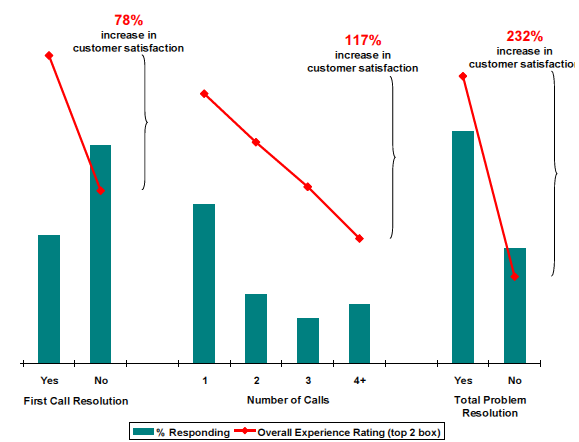First Call Resolution (FCR): its Measurement and Impact: Convergys
Author: Convergys Corporation
Date: 7th October 2008
We’ve all heard the naming conventions: “Get it right the first time,” “one and done,” “first call does it all.” Not only is resolving a customer’s question or issue on the first call a common business goal in the contact center world, often success on this measure is considered a key performance driver.
By definition, the process of fully addressing a customer’s issue the fi rst time - commonly referred to as First Call Resolution (FCR) - eliminates the need for the customer to follow up with a second call. Because of
this, it is assumed that very few aspects of the call affect customer satisfaction as much as FCR.
Some experts set a best-practice “target” for FCR as high as 85% achievement. However, research by Convergys has shown that FCR varies widely by industry. For example, in a 2007 benchmarking study, FCR ranged from a low of 33% (Communications) to a high of 64% (Healthcare / Insurance). FCR also varied by contact type; more technically complex contacts yielded signifi cantly lower FCR rates.
The first step in managing this critical performance metric is understanding what is meant by FCR, as well as the various ways it is measured. Next, it is important to calculate the return on investment yielded by FCR to justify the expansion of any resolution programs. Finally, best practices in FCR must be deployed to ensure positive returns are generated.

By effectively measuring and managing FCR, companies not only improve their bottom line but also bolster customer satisfaction.
Read the full White Paper and Case Study below